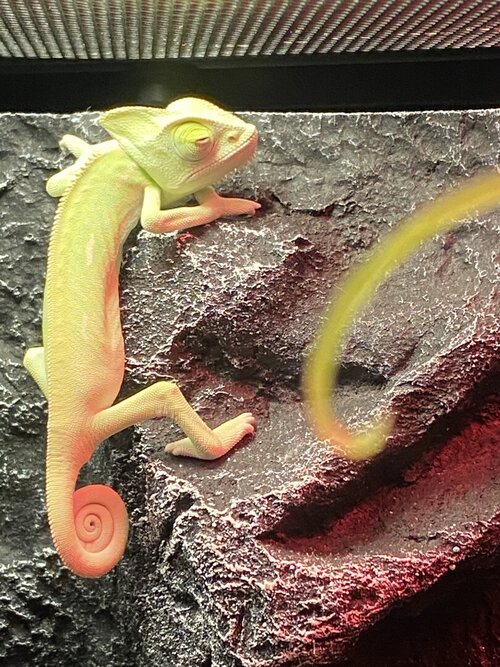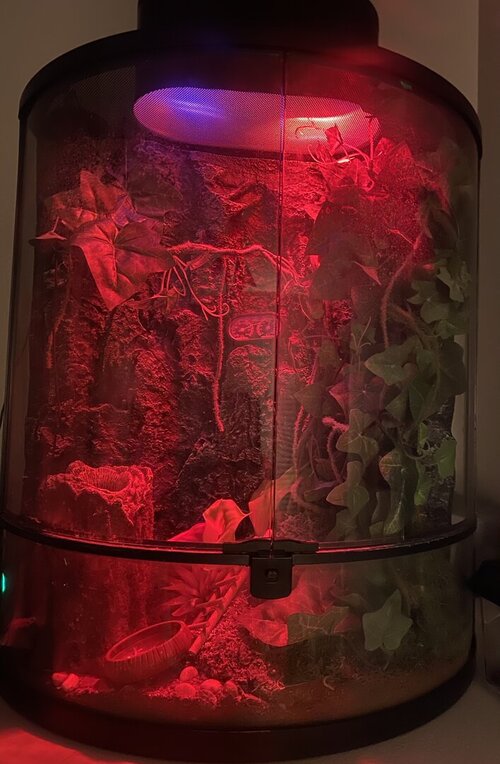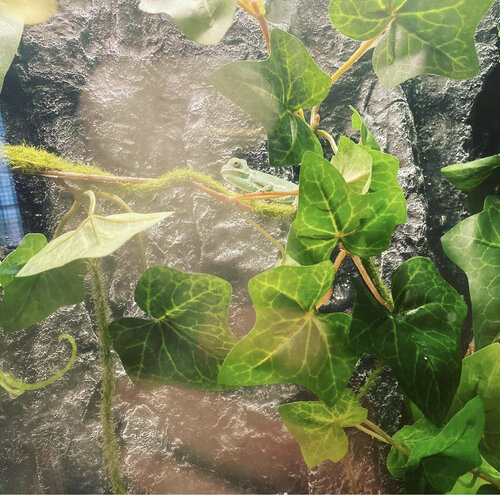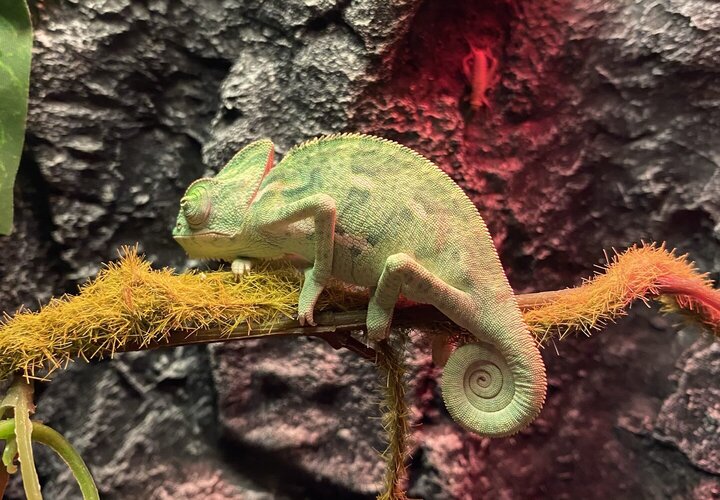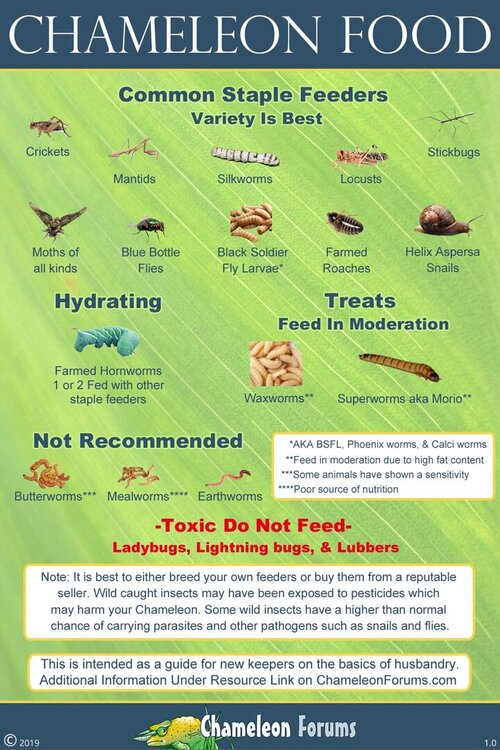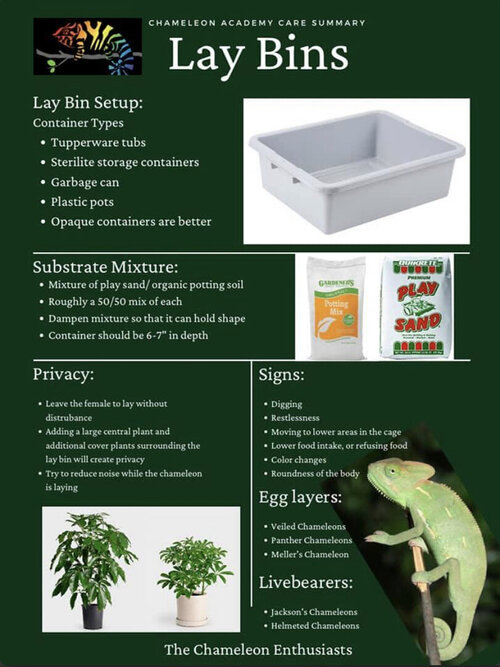Snoop
New Member
Chameleon Info:
Cage Info:
- Your Chameleon - The species, sex, and age of your chameleon. How long has it been in your care? 3 inch Veiled Chameleon, just started watching (as of 5/7) for son this summer. And his eyes have been squinted since we got him but he’s been active. Included one photo from December of when Snoop’s eyes were open. And saw another photo of him in April where his eyes also appeared to be squinted. So don’t believe this is a recent issue. Thoughts?
- Handling - How often do you handle your chameleon? With the transition of Snoop Dogg being relocated, we haven’t handled.
- Feeding - What are you feeding your cham? What amount? What is the schedule? How are you gut-loading your feeders? We are providing small crickets and meal worms. We make sure he has at least two crickets if not more in his enclosure. And 5-6 meal worms available. We are providing the crickets with water and apple.
- Supplements - What brand and type of calcium and vitamin products are you dusting your feeders with and what is the schedule? We are dipping the crickets in repti calcium.
- Watering - What kind of watering technique do you use? How often and how long to you mist? Do you see your chameleon drinking? We have tree stump fogger that we run as needed. We also mist the enclosure a few times a day. We haven’t seen him drink.
- Fecal Description - Briefly note colors and consistency from recent droppings. Has this chameleon ever been tested for parasites? I don’t believe the chameleon has ever been tested for parasites. His droppings are brown and a bit runny.
- History - Any previous information about your cham that might be useful to others when trying to help you.
Cage Info:
- Cage Type - Describe your cage (Glass, Screen, Combo?) What are the dimensions? See pic.
- Lighting - What brand, model, and types of lighting are you using? What is your daily lighting schedule? Thrive, UVB light and we have been using a red infrared light
- Temperature - What temp range have you created (cage floor to basking spot)? Lowest overnight temp? How do you measure these temps? We have a thermometer- temp 70- 90 and humidity 50-80%
- Humidity - What are your humidity levels? How are you creating and maintaining these levels? What do you use to measure humidity? Please see above
- Plants - Are you using live plants? If so, what kind? Artificial plants
- Placement - Where is your cage located? Is it near any fans, air vents, or high traffic areas? At what height is the top of the cage relative to your room floor? We have it on our mantle
- Location - Where are you geographically located? Midwest

